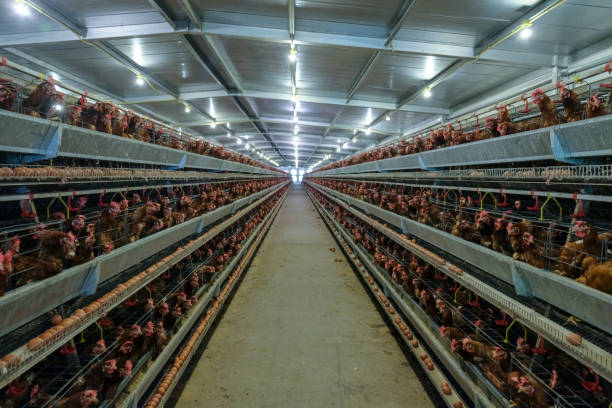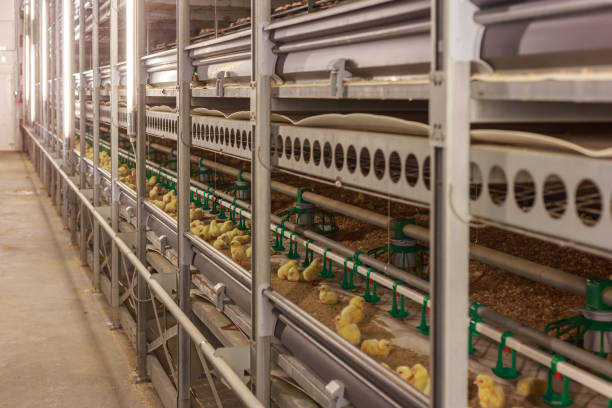
A Beginner’s Guide to Poultry Farming in South Africa: From Setup to Sales
A Beginner’s Guide to Poultry Farming in South Africa: From Setup to Sales
So, you’re thinking about diving into poultry farming in South Africa? Great choice! It’s a sector ripe with opportunity, offering a relatively quick turnaround and the potential for good returns, especially with the growing demand for poultry products. But like any venture, success hinges on preparation, knowledge, and a lot of hard work. This guide will walk you through the essentials, from setting up your farm to getting your products to market. Let’s get cracking!
**1. Planning and Preparation: Laying the Foundation**
Before you even think about buying your first chick, you need a solid plan. This is where you meticulously map out your business, identifying your target market, assessing your resources, and understanding the regulatory landscape.
* **Market Research:** Who are you selling to? Are you aiming for the local community, restaurants, supermarkets, or perhaps exporting? Understand their needs, preferred price points, and quality expectations. South Africa has a diverse consumer base, so tailoring your product to a specific niche can be advantageous.
* **Business Plan:** A comprehensive business plan is your roadmap to success. It should include:
* **Executive Summary:** A concise overview of your business.
* **Company Description:** Details about your farm, its location, and your business structure.
* **Market Analysis:** Your findings from the market research.
* **Products and Services:** What type of poultry will you raise (broilers for meat, layers for eggs, or both)? Will you offer value-added products like processed chicken or packaged eggs?
* **Marketing and Sales Strategy:** How will you reach your target market and sell your products?
* **Management Team:** Who will run the farm, and what are their qualifications?
* **Financial Projections:** Detailed forecasts of your income, expenses, and profitability. This is crucial for securing funding.
* **Regulatory Compliance:** South Africa has regulations governing poultry farming, including animal welfare, biosecurity, and food safety. Contact the Department of Agriculture, Forestry and Fisheries (DAFF) to understand the requirements and obtain the necessary licenses and permits. You will likely need to register your farm. Compliance is not optional; it protects your business and the health of consumers.
* **Choose Your Poultry Type:** Broilers (for meat) grow fast, reaching market weight in about 6-8 weeks. Layers (for eggs) start laying around 18-20 weeks. Dual-purpose breeds can provide both meat and eggs, but typically with lower yields compared to specialized breeds. Your choice will significantly influence your farm’s setup and operational costs.
**2. Setting Up Your Farm: Building the Infrastructure**
Your farm’s infrastructure will directly impact the health, productivity, and overall efficiency of your operation.
* **Location:** Consider these factors when choosing a location:
* **Accessibility:** Easy access to roads for transporting feed, chicks, and finished products.
* **Water Source:** A reliable and clean water source is essential. Poultry need constant access to fresh water.
* **Proximity to Markets:** Being close to your target market reduces transportation costs.
* **Biosecurity:** Isolation from other poultry farms and residential areas reduces the risk of disease outbreaks. Ensure good drainage to prevent waterlogging and disease spread.
* **Zoning Regulations:** Check local zoning laws to ensure poultry farming is permitted in your chosen area.
* **Housing:** The type of housing you choose will depend on the scale of your operation and your budget. Options include:
* **Free-Range:** Chickens have access to outdoor areas. This requires more land and stronger fencing to protect against predators.
* **Deep Litter System:** Chickens are housed in a building with a floor covered in litter (wood shavings, straw, or peanut hulls). This requires regular cleaning to maintain hygiene.
* **Cage System:** Chickens are housed in cages, usually in multi-tiered structures. This allows for higher stocking densities but raises ethical concerns from some consumers. Note that globally, there is a move away from conventional battery cages towards enriched cages or cage-free systems.
No matter the system, ensure:
* **Adequate Space:** Overcrowding leads to stress and disease. Consult best practice guidelines for stocking densities.
* **Proper Ventilation:** Good ventilation is critical for removing ammonia and maintaining air quality.
* **Temperature Control:** Poultry are sensitive to temperature fluctuations. Provide heating or cooling as needed, depending on your climate.

* **Protection from Predators:** Dogs, cats, snakes, and birds of prey can prey on your poultry. Secure your housing and surrounding area.
* **Equipment:** Essential equipment includes:
* **Feeders and Drinkers:** Choose feeders and drinkers that are appropriate for the age and type of poultry you are raising. Automatic systems can save labor.
* **Water Tanks:** For storing water. Ensure adequate capacity and a reliable water source.
* **Heating and Cooling Systems:** Depending on your climate.
* **Lighting:** Artificial lighting can be used to stimulate egg production in layers.
* **Egg Collection Equipment:** If you are raising layers.
* **Waste Management System:** A plan for disposing of manure and other waste products.
* **Biosecurity Measures:** Implement strict biosecurity measures to prevent disease outbreaks:
* **Foot Baths:** Place foot baths containing disinfectant at the entrance to your poultry houses.
* **Restricted Access:** Limit access to your farm and poultry houses to essential personnel only.
* **Proper Hygiene:** Maintain good hygiene practices, including washing hands and cleaning equipment regularly.
* **Rodent and Pest Control:** Implement a rodent and pest control program.
* **Vaccination Program:** Consult with a veterinarian to develop a vaccination program for your poultry.
**3. Sourcing Your Poultry: Choosing the Right Breed and Supplier**
The genetics of your poultry and the health of your chicks will significantly impact your success.
* **Choose the Right Breed:** Select breeds that are well-suited to your climate and production goals. Research different breeds and compare their performance characteristics. Popular broiler breeds include Cobb and Ross. Popular layer breeds include Lohmann and Hy-Line.
* **Source from Reputable Hatcheries:** Buy your chicks or pullets (young hens) from reputable hatcheries that have a proven track record of supplying healthy birds. Ask for health certificates and vaccination records. In South Africa, there are established hatcheries that supply day-old chicks nationwide.
* **Consider Day-Old Chicks vs. Pullets:** Day-old chicks are cheaper but require more care and attention during the brooding period. Pullets are more expensive but are closer to laying age, reducing the time it takes to start generating income.
**4. Feeding and Nutrition: Fueling Growth and Production**
Proper nutrition is essential for healthy growth, egg production, and disease resistance.
* **Use High-Quality Feed:** Feed your poultry a balanced diet that meets their nutritional requirements. Commercial poultry feeds are available in different formulations for different stages of growth and production. Look for reputable feed suppliers in South Africa.
* **Starter Feed:** For young chicks.
* **Grower Feed:** For growing birds.
* **Finisher Feed:** For broilers nearing market weight.
* **Layer Feed:** For laying hens.

* **Follow Feeding Guidelines:** Follow the feeding guidelines provided by your feed supplier. Overfeeding or underfeeding can negatively impact performance.
* **Provide Fresh Water:** Ensure your poultry have constant access to fresh, clean water.
* **Supplementation:** Consider supplementing your poultry’s diet with vitamins and minerals, especially during periods of stress or disease. Consult with a veterinarian or poultry nutritionist.
**5. Health Management: Preventing and Treating Diseases**
Poultry are susceptible to various diseases, which can significantly impact your profits. Preventative measures are crucial.
* **Vaccination:** Develop a vaccination program with a veterinarian to protect your poultry against common diseases like Newcastle disease, infectious bronchitis, and Gumboro disease.
* **Biosecurity:** As mentioned earlier, biosecurity is critical for preventing disease outbreaks.
* **Early Detection:** Monitor your poultry for signs of illness, such as decreased appetite, lethargy, ruffled feathers, diarrhea, or respiratory problems.
* **Quarantine:** Isolate sick birds from the rest of the flock to prevent the spread of disease.
* **Veterinary Care:** Consult with a veterinarian for diagnosis and treatment of poultry diseases. Have a relationship established before you need it.
* **Proper Waste Management:** Remove manure and other waste products regularly to prevent the buildup of harmful bacteria and parasites.
**6. Marketing and Sales: Reaching Your Customers**
Getting your product to market efficiently is key to profitability.
* **Direct Sales:** Selling directly to consumers through farmers’ markets, farm shops, or online platforms can increase your profit margins.

* **Wholesale:** Selling to retailers, restaurants, or wholesalers can provide a steady stream of income. This often requires securing supply agreements.
* **Value-Added Products:** Consider processing your poultry into value-added products, such as packaged chicken pieces, sausages, or smoked chicken. This allows you to capture a larger share of the market.
* **Branding and Packaging:** Develop a strong brand identity and attractive packaging to differentiate your products from the competition.
* **Online Presence:** Create a website or social media page to promote your farm and products.
* **Build Relationships:** Establish strong relationships with your customers and suppliers.
**7. Financial Management: Keeping Track of Your Numbers**
Good financial management is essential for the long-term sustainability of your business.
* **Keep Accurate Records:** Track all your income and expenses accurately.
* **Monitor Key Performance Indicators (KPIs):** Track KPIs such as feed conversion ratio, egg production rate, mortality rate, and average selling price.
* **Manage Your Cash Flow:** Ensure you have enough cash on hand to cover your expenses.
* **Seek Professional Advice:** Consult with an accountant or financial advisor for guidance on financial planning and management.
* **Explore Funding Options:** There are various funding options available for poultry farmers in South Africa, including government grants, loans, and private investment.
**8. Continuous Learning: Staying Ahead of the Curve**
The poultry industry is constantly evolving. Stay up-to-date on the latest trends, technologies, and best practices by attending workshops, conferences, and industry events. Subscribe to poultry publications and join poultry farming associations.
**Challenges and Opportunities in South African Poultry Farming:**
* **Challenges:**
* **Disease Outbreaks:** Avian influenza and other diseases can decimate flocks.
* **Feed Costs:** Feed is a major expense. Fluctuations in grain prices can impact profitability.
* **Competition:** Competition from large-scale producers and imports.
* **Load Shedding:** Power outages can disrupt operations, especially for temperature-sensitive environments.
* **Security:** Theft and vandalism can be a concern.
* **Opportunities:**
* **Growing Demand:** The demand for poultry products is growing in South Africa.
* **Niche Markets:** Opportunities exist for niche markets, such as free-range, organic, or halal poultry.
* **Government Support:** The South African government offers support programs for small-scale farmers.
* **Export Potential:** Opportunities for exporting poultry products to other African countries.
**Final Thoughts:**
Poultry farming in South Africa can be a rewarding and profitable venture. By following the steps outlined in this guide and continuously learning and adapting, you can increase your chances of success. Remember, dedication, hard work, and a commitment to quality are essential ingredients for building a thriving poultry farm. Good luck, and may your chickens lay golden eggs!
